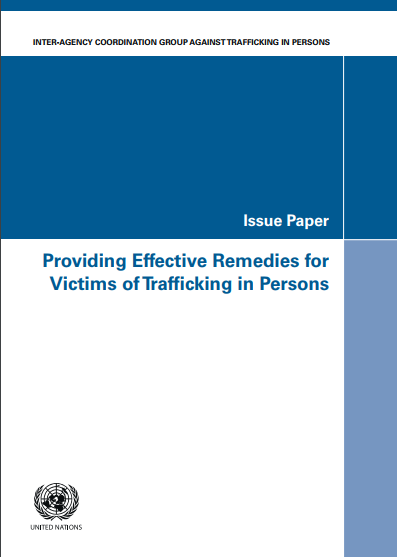Beyond Compliance: The Modern Slavery Act Research Project
PublicationsDocumenting the impact of new legislative acts is an indispensable tool for improving the effectiveness of this legislation and advancing business practice.
This report, produced by the Inter-Agency Coordination Group against Trafficking in Persons (ICAT), examines the right to effective remedies for victims of trafficking in persons under international law, the scope of its application, and the challenges that arise. It concludes by providing practical recommendations for improving access to remedies for victims of trafficking in persons.

Documenting the impact of new legislative acts is an indispensable tool for improving the effectiveness of this legislation and advancing business practice.
Modern slavery thrives in crisis situations. During conflicts, natural and man-made disasters, and humanitarian situations, adults and children are vulnerable to exploitation and trafficking. Conflict situations often exacerbate existing vulnerabili...Read More
Although the government of Uzbekistan has made progress on ending child and adult forced labour in the cotton fields after more than a decade of international pressure, a new report finds that forced labour remains rampant in other arenas of Uzbek l...Read More
This special issue of Anti-Trafficking Review bridges the fields of queer and transgender studies, migration studies, research on sex work, and critiques of the discourse on human trafficking. Along with centring LGBTQI+ subjects as actors within th...Read More